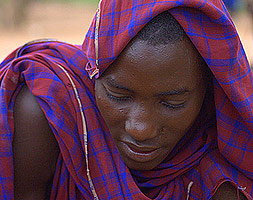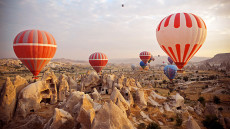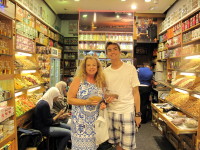This Just In
Last Days of the Masai
I came across this fascinating article by Joshua Hammer with Conde Nast Travel, and thought you’d like it to. What do you think of it? Have you been to the region? I’d love to hear your story if you have one!
 Tanzania’s Masai are losing their land—and their way of life—to forces ranging from tourism to wildlife conservation. Joshua Hammer reports from the front lines of a battle in which Africa’s iconic warriors are fighting for their very survival….
Tanzania’s Masai are losing their land—and their way of life—to forces ranging from tourism to wildlife conservation. Joshua Hammer reports from the front lines of a battle in which Africa’s iconic warriors are fighting for their very survival….
It’s just a half-hour drive from the Ngorongoro Crater, one of the most popular safari destinations in Africa, to the village of Misigiyo, a settlement of Masai cattle herders in the adjacent highlands. But it might as well be a world away. As the tarmac road curves around the caldera’s eastern lip—the site of nearly all the crater’s five-star tented camps and safari lodges—it plunges through a rain forest ecosystem created by moisture-laden winds that sweep in from the Indian Ocean. Huge fig trees, considered sacred by the Masai, line the road, draped in spools of Spanish moss. Breaks in the dense vegetation provide panoramic views of the floor of the collapsed volcano: a sea of grass dappled with alkaline lakes, where 25,000 large animals, including the highest density of predators in Africa and two dozen black rhinos, roam. Then the rain forest peters out, and, if you make the journey when I did, in late spring, a dense fog rolls in and the lush vegetation gives way to a high plateau, as bleak and treeless as the North Dakota Badlands.
Misigiyo, at 8,200 feet above sea level, is a cold and windswept place, leached of color except for a bright blue-and-green map of the world painted on the facade of a concrete-block primary school, and the orange-and-red checked shukas—traditional robes—of its Masai inhabitants. Just after I arrived, I met a pair of village elders in their forties who sat idle in front of a grocery store hammered together out of rough wood planks. They were gazing across the prairie at the faint outlines of abandoned plots where they once grew potatoes, maize, tomatoes, and beans.
For centuries, cattle have been the sole measure of wealth for the Masai, but during the past several decades the productivity of their livestock has steadily declined, thanks to a long pattern of inbreeding and devastating droughts in 2000 and 2009 that killed half of all Masai cattle in Tanzania. In Misigiyo, the Masai have become dependent on raising subsistence crops; the storied cow’s blood and milk diet of their nomadic ancestors is a thing of the past. But now, even their ability to farm is under threat: The Ngorongoro Conservation Area Authority (NCAA), the governmental body that administers the villages around the crater, claims that agriculture interferes with the migratory patterns of wild animals. If left unchecked, they say, the farms will lead to a catastrophic drop in the game population. “These [Masai farms] were meant to be one-acre fields, but they have just exploded,” said Justice Muumba, a government conservationist who is not Masai. In August 2009, the NCAA took action: It forbade the Masai from growing crops around the crater and began arresting people who violated the ban. Sixty Masai have been jailed during the past year. Villagers in Misigiyo told me that the law had been enforced to devastating effect. Many have lost a major part of their livelihood and are surviving on emergency rations trucked in by the government. Down the line, the NCAA says, it plans to improve breeding methods for Masai cattle, which, in “three or four years,” said one official, will boost Masai revenues and allow them to purchase maize and other vegetables on the open market. But according to the Masai, they have been hearing about such plans for years and nothing has come of them. Francis Syapa, the representative for Misigiyo on the Pastoralist Council (the local administrative body), told me, “There are people here who don’t know what they will eat or how they will continue to live.” >> continue reading







